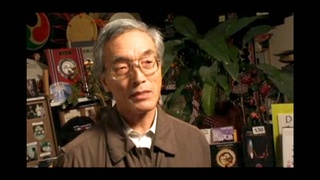Interviews
Taiko from the old days
So, when I became involved at 10 years old, I remember the group being a group of older men just getting together to have fun. From the stories I’ve heard, the Kiahula plantation Obons, back then, it was just Fukushima Ondo in terms of an Obon song. So, all the stories from all the 80 year old, 90 year old women and men from that generation is that they played Fukushima Ondo from sun down to about 1 or 2 in the morning. So it was a very rigorous five or six hours worth of Fukushima Ondo. And it was a community event. All the families from the various ethnic groups joined in.
Date: July 9, 2004
Location: Hawaii, US
Interviewer: Art Hansen, Sojin Kim
Contributed by: Watase Media Arts Center, Japanese American National Museum




